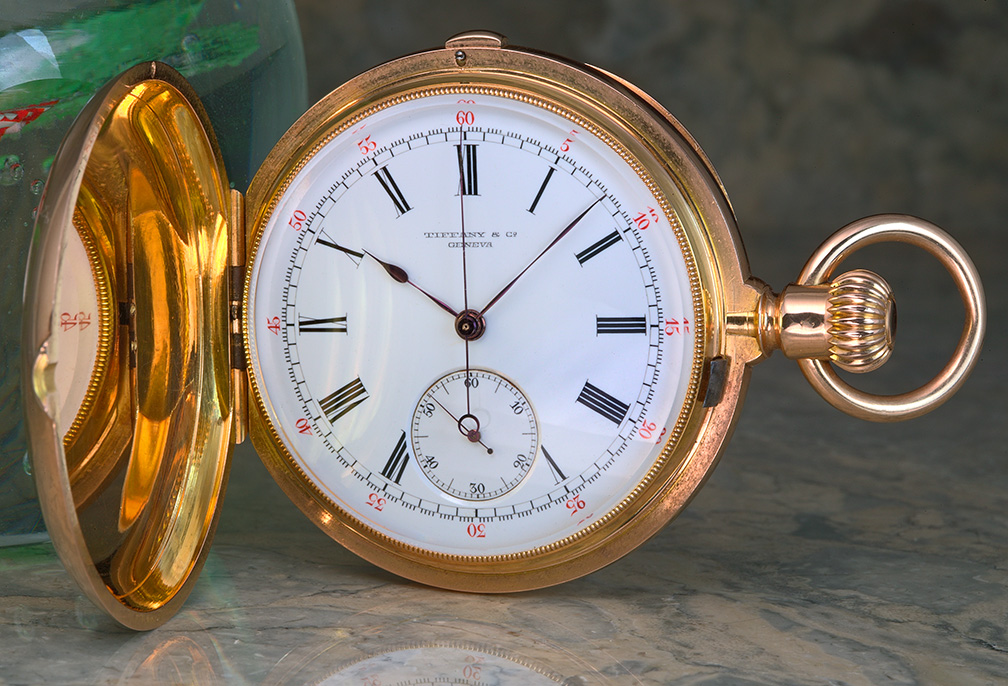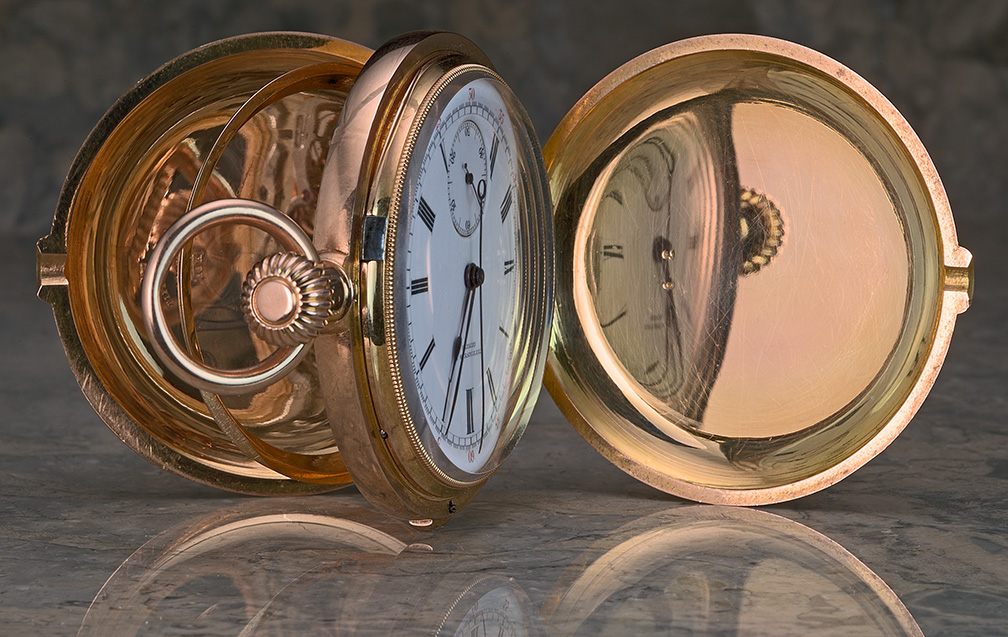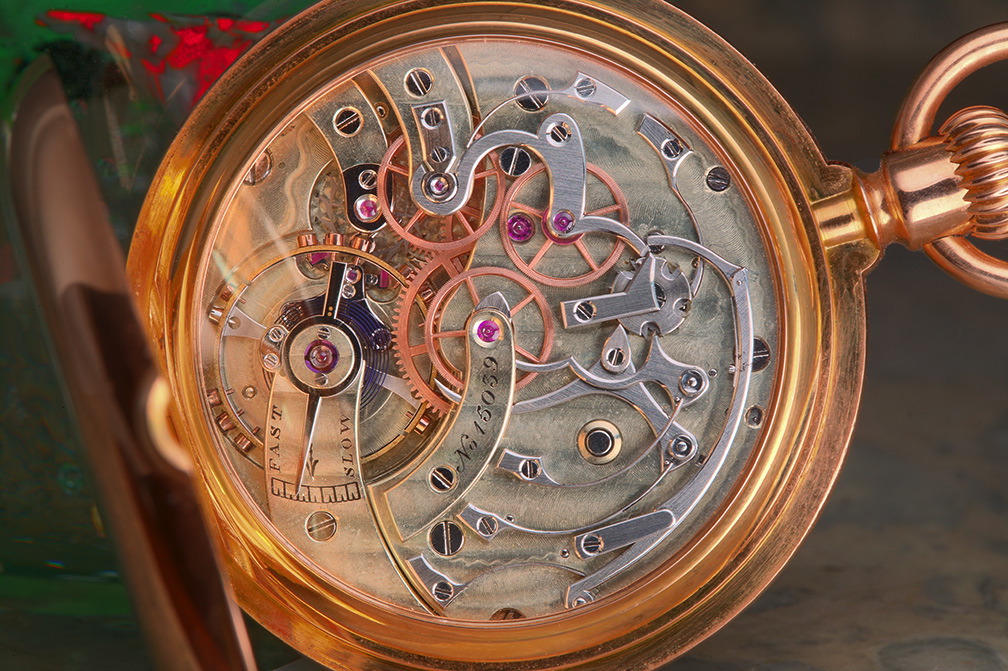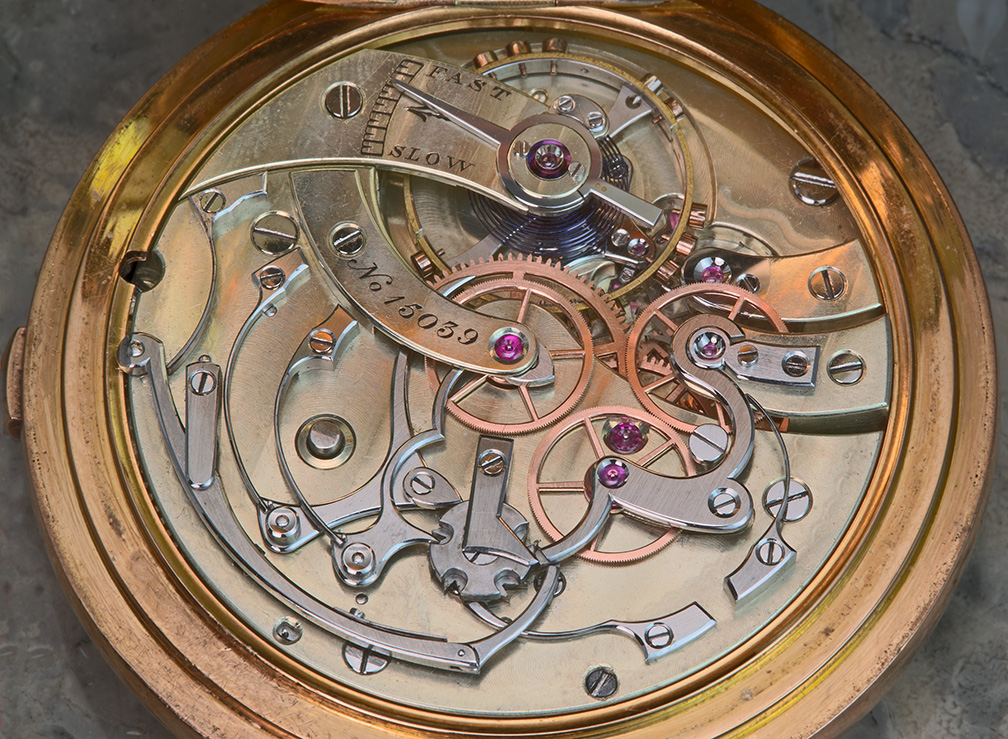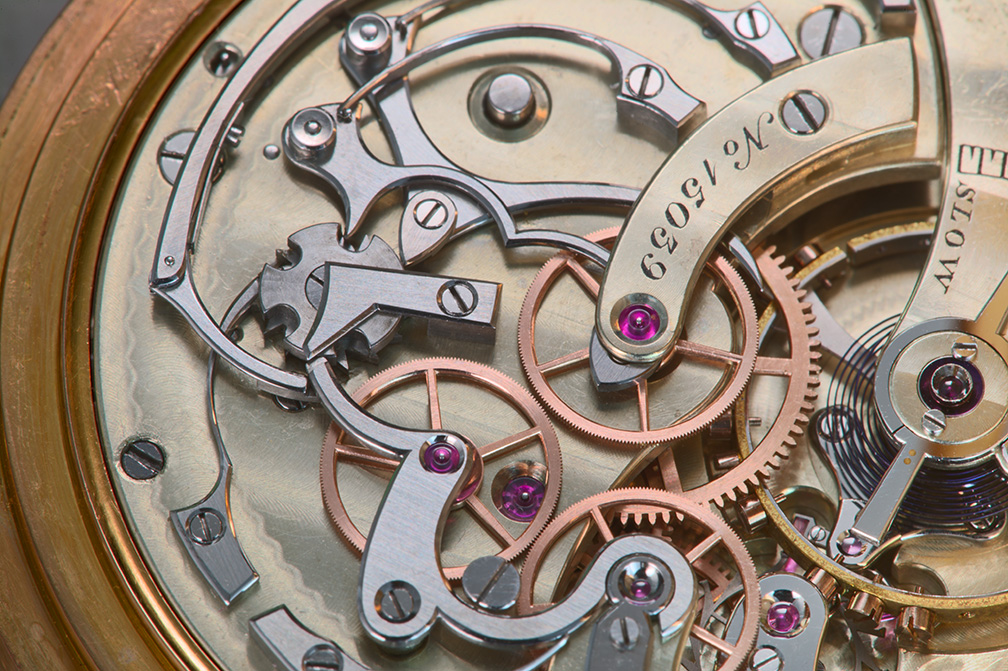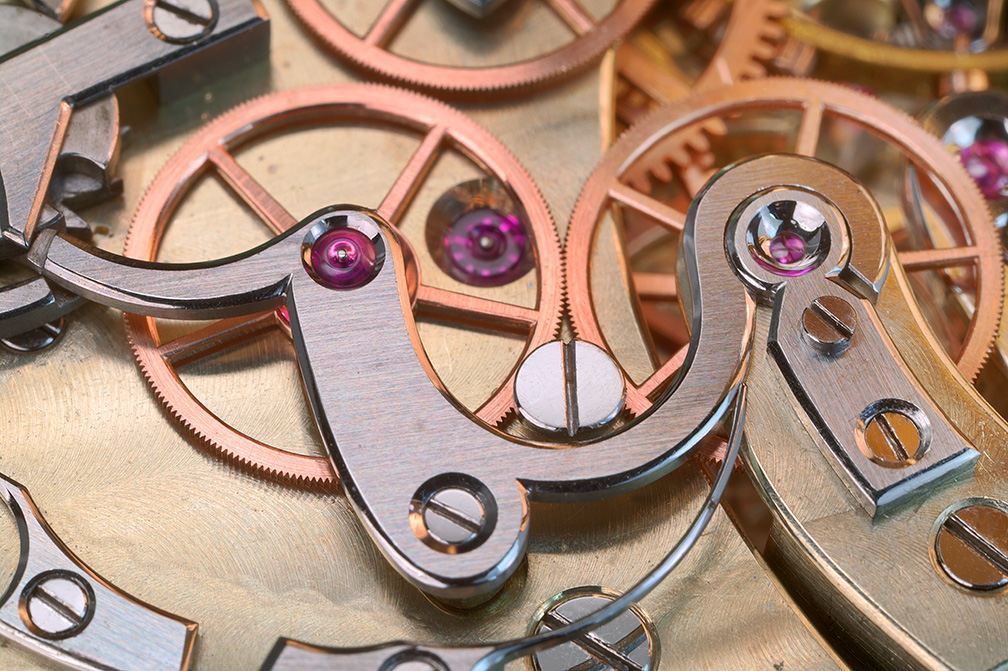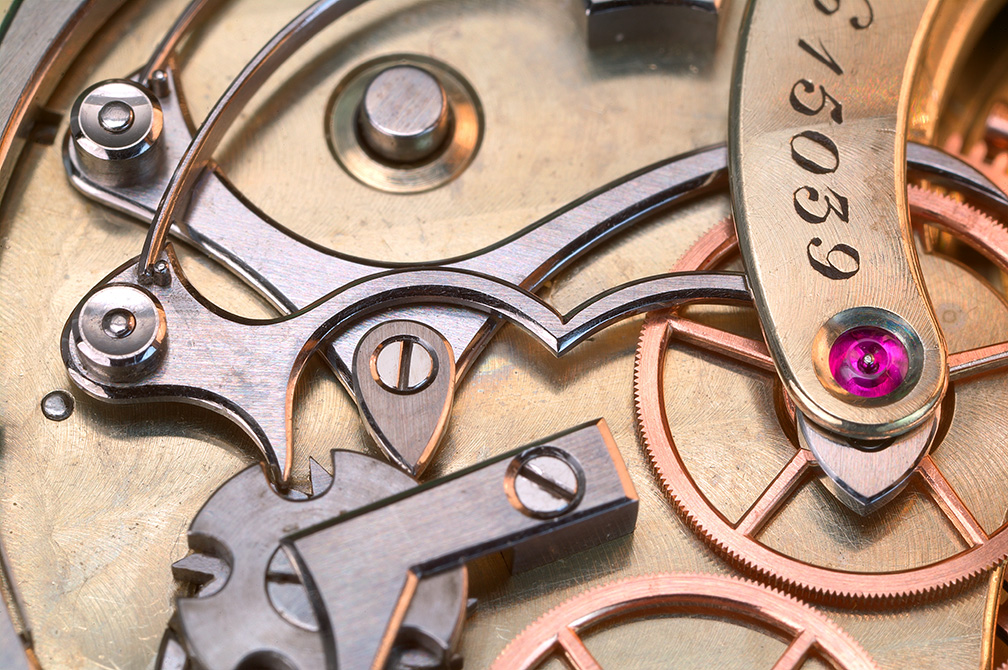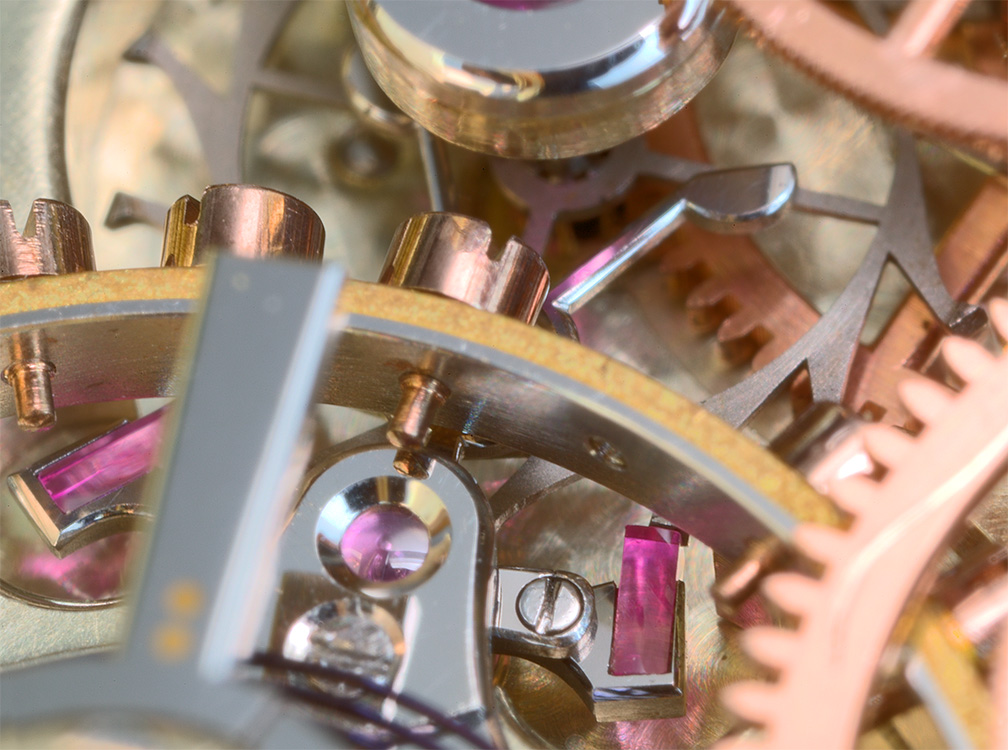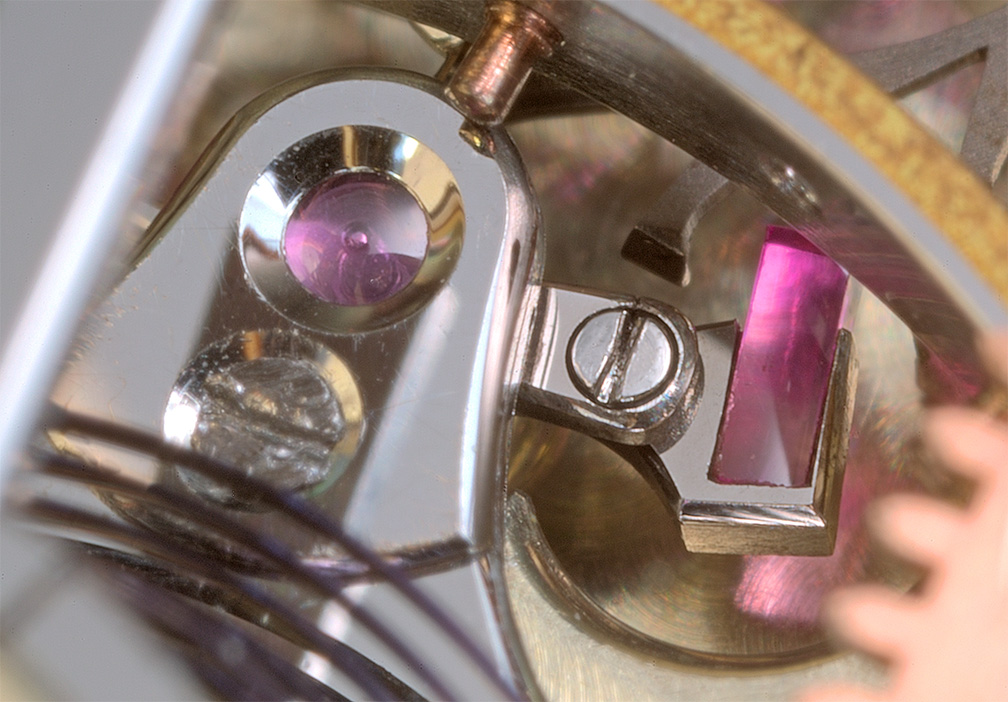For quite a while I have wanted a pocketwatch suitable for regular use. My requirements evolved over time to the following:-- stem winding and setting
-- relatively simple for better reliability
-- straightforward but beautiful dial
-- full hunter-case for protection in the pocket and handling
-- historical value but not great historical significance (the watch should be a superior reflection of its place in watchmaking history, without being strictly a museum piece)
-- especially, a lovely and beautifully-executed movement
-- the whole in proper condition to enjoy in normal useI wasn't seeking any particular brand or age or material, but not surprisingly I casually looked around for a couple of years before stumbling into my suitable pocketwatch. The watch which turned up is of medium size (50mm diameter), with a heavy 18k pink gold hunter case (with no inscription). A light press inwards on the crown releases the front cover which springs and stays open at almost exactly 90 degrees for easy viewing. The dial is smooth matte-white fired enamel, featuring a sunken seconds subdial, fine thin Roman numerals, a perfect chapter ring indicating 1/5th seconds and small red Arabics for the minutes. The hands are my favorite chronometer (spade) style and are (at least presently) purplish-black. As it turns out my watch is a simple one-minute chronograph, the only complication I would consider for this project, and one which brings significant extra attraction to the movement.
